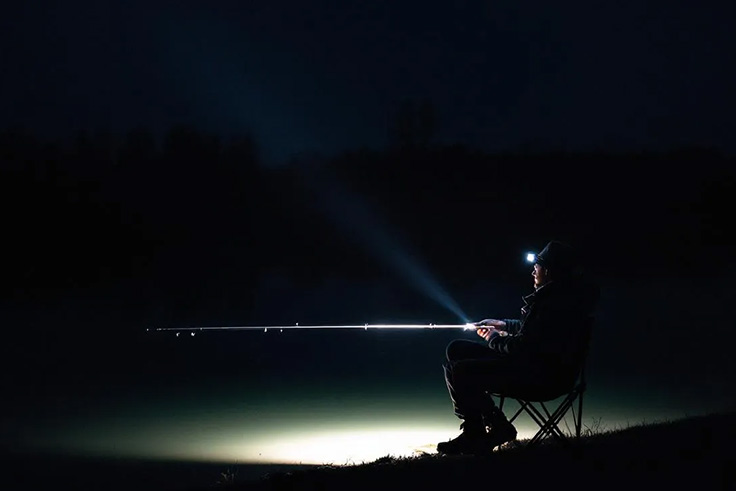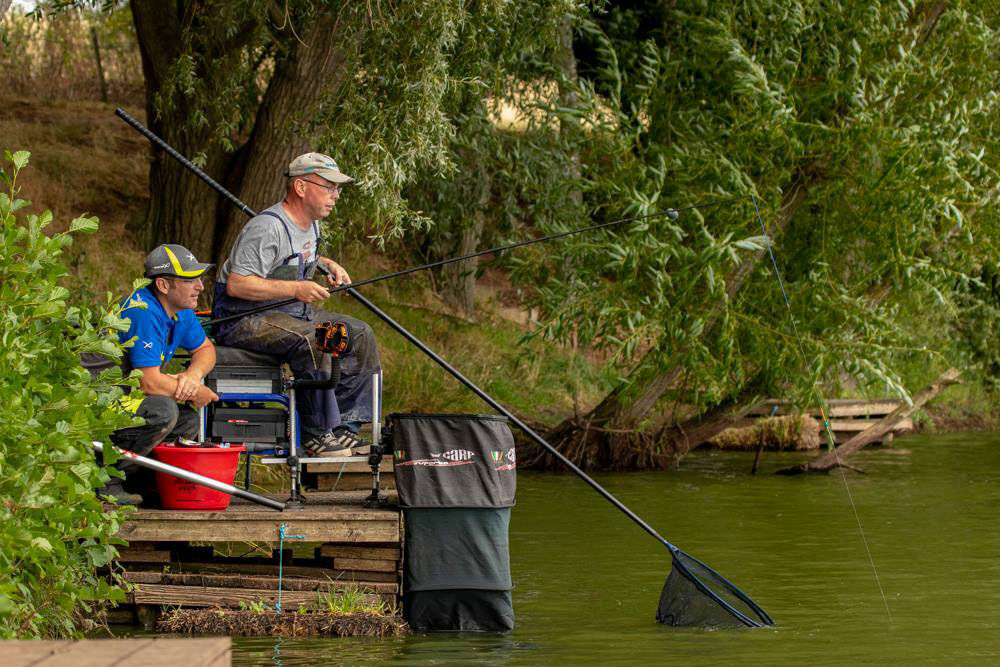Types of Fishing Nets: A Beginners Guide
- By Andy Grenfell
- |
- 17 February 2025

Fishing nets are an essential part of any angler’s set up, regardless of whether you’re targeting large carp, float fishing with the intent of smaller coarse species, or chasing predatory species be that in freshwater or saltwater. Having the right net enables you to land your chosen target species safely and effectively, making your experience more efficient and enjoyable. In this guide, we will break down the different types of fishing nets, so you can identify which you’ll need for your chosen fishing method.
Table of Contents
- CARP FISHING NETS (SPECIMEN)
- COARSE FISHING NETS (MATCH)
- PREDATOR FISHING NETS
- SEA FISHING NETS
- HOW TO CHOOSE THE RIGHT FISHING NET
Carp Fishing Nets (Specimen)
Carp fishing nets are often large triangular nets, constructed from carbon fibre to ensure strength while being lightweight. They vary from small 36” nets, right up to large 50” nets. Due to carp coming in many different sizes and also being compliant with fishery rules, the most popular fishing net sizes tend to be between 42” and 46”. This provides the fish with enough space to safely move in the net when caught until it can be safely released back into the water.
Smaller 36” fishing nets are often popular with anglers targeting barbel, large tench, bream, or even some pike anglers, whereas, the larger 50” nets are mainly used by anglers targetting catfish or who are travelling aboard in search of those true giants. These fishing nets will often be either a one or two-piece 6ft handle (net pulls apart into two 3ft sections), however, some brands do offer two-piece 8ft handles (two 4ft sections), which are great for boat work when a shorter handle is easier to use, or when zig fishing a longer net handle is highly useful.
The net itself will be made with soft, fish-friendly mesh to avoid injuring the fish, and the net arms will slide in and out of the front spreader block. It is important to remember that you do not lift the fish out of the water in these nets, as you risk injury to the fish and breaking the net itself. The net arms need to be removed from the spreader block, and the fish safely lifted in a weigh sling, to prevent damage.

Coarse Fishing Nets (Match)
Coarse fishing nets are often used to catch a variety of species in rivers, canals, and lakes. There is also a retaining net system called a coarse fishing keepnet, which is often used to retain smaller species for weighing in at the end of a session or match. Smaller than carp fishing nets, coarse fishing keepnets typically range between 16" - 22" and are often a circular shape for stability and strength, so they do not need to be taken apart to lift the fish from the water unless the fish is a decent size. They are lightweight with a fine mesh to ensure smaller species like roach or bream are not harmed during landing, and the nets are sold often as net only with the net handle sold separately to offer a greater array of choices depending on the venues you might be fishing. For a normal commercial fishery, a 2m - 3m handle is ideal, but for rivers, chasing chub or barbel, a 4m handle may be better if you have high banks.
Keepnets are not designed for landing your fish, but for safely retaining them for weighing later on to weigh them in at the end of your session. They come in different lengths with either circular or square hoops at set stages to support the keepnet open, all linked with a soft easy flow mesh designed to keep fish safe and unharmed.
At the end of your session, remove the fish from the keepnet for weighing either in small batches or in one go, and then release your prize back into the water. Please note, this is only for smaller coarse fishing species. A carp or tench over 5lb should not be stored in a keepnet unless otherwise stated in the fishery rules. Fish over 10lb and pike should not be kept in a keepnet.

Predator Fishing Nets
Predator fishing nets can vary from smaller oval shaped nets used for coarse fishing, or large carp fishing nets. For large pike and catfish, often a carp net can and often will be used. However, when we move to lure fishing, mobility is often key, so smaller nets are far more favourable and you will often see smaller pan nets, often with rubberised mesh with various handle options.
The rubber mesh serves two purposes, and not only is it soft against the fish, but with species such as zander and perch, their spiny fins are far less likely to get caught in the mesh or their teeth as is the case with pike. The second element is that, as a result, your treble hooks are less likely to get caught.
The handle options will subsequently vary depending on the model chosen, with some offering telescopic handles, and others offering a flick net handle, so that you can flick the net head up and it locks into the handle so you can walk around with the net over your shoulder or on your back, and flick it out when required when you need to land your fish. These nets are often made from an aluminium or steel construction for strength while retaining a lightweight nature.

Sea Fishing Nets
Sea fishing nets must be durable, corrosion-resistant, and large enough for handling bigger species. These nets are designed to handle a variety of species, from bass to flatfish. Look for nets made from materials such as aluminium or stainless steel, to prevent corrosion. The mesh should be sturdy enough to handle larger fish, but soft enough to avoid damaging their scales. Larger, collapsible nets are a popular choice for sea anglers as they provide ease of transport and durability, very similar to the predator nets we see. Boat net handles are generally longer, one-piece handles for added durability.

How to Choose the Right Fishing Net
To summarise, here’s a quick guide to selecting the right net for your fishing needs:
- Carp Fishing Nets: A large, soft-mesh landing net with a long handle.
- Coare Fishing Nets: Use a keepnet for holding fish and a versatile landing net for different species.
- Predator Fishing Nets: A strong, rubber-coated net to protect the fish and reduce your trebles snagging in the mesh, but often a carp net when dead baiting for large pike, or fishing for catfish.
- Sea Fishing Nets: A corrosion-resistant net designed for larger species and rough conditions.
By selecting the right net for your preferred fishing discipline, you’ll make your time on the water more enjoyable and ensure the safe handling of your catch.












